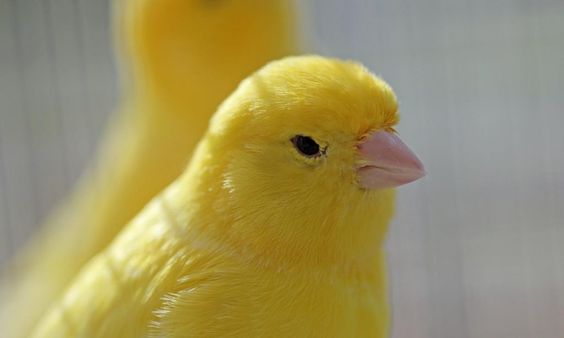Yellow canaries are funny birds, playful and good-natured. That is why they have become so popular as pets. But, having got canaries at home, one must not forget to play with them – they can hardly endure loneliness.

- Domestic canaries are descended from the finches that inhabit the Canary Islands and Madeira.
- Over the 500 years spent next to man, the canary’s vocal apparatus has changed, that is, her singing is different from the voice of the bird’s wild ancestors. This is the only animal that has undergone such changes, becoming a pet.
- One of the most popular varieties of canaries, the Harz roller, was bred in Germany and features surprisingly melodic singing. Breeding and selling these songbirds, as well as building cages for them, was the most popular part-time job among miners – the main boom in canary breeding occurred in the second half of the 19th century.
- The popular legend that miners allegedly took bred canaries underground with them as an indicator of oxygen levels is not true. In reality, songbirds were too expensive for these purposes, and the miners made ordinary wild birds their companions.
- At the moment, there are over 120 species of canaries in the world.
- The canaries participate in special championships organized by professional associations of bird watchers. The singing of each breed is assessed by expert judges who are guided by specially developed criteria.
- The canaries are excellent at remembering and repeating complex melodies, and also imitate human speech, like parrots.
- The canaries have a positive effect on the human psyche and are able to improve relationships between members of the family in which they live.
- The canaries live to be 15 years old and continue to sing until they die.
- The canaries are not only bright yellow – some species of these birds have white, red, or brown plumage.
- A canary’s hearing is capable of perceiving sounds in the range from 1100 to 10,000 Hz.
- The singing of canaries has a more complex and deeper structure than that of their wild ancestors, but at the same time, Canary finches have about 400 singing elements – thus, their singing is more diverse than that of artificially bred species.
- Initially, the Spaniards were monopolists in the canary trade – they kept the habitat of these birds in secret and sold only males to other European countries for big money to make it impossible to breed them outside of Spain. Then the Italians broke their monopoly.
- If several canaries are kept in the house, their cages are usually placed one on top of the other so that the birds do not see each other – otherwise, they are irritated and hardly sing.

